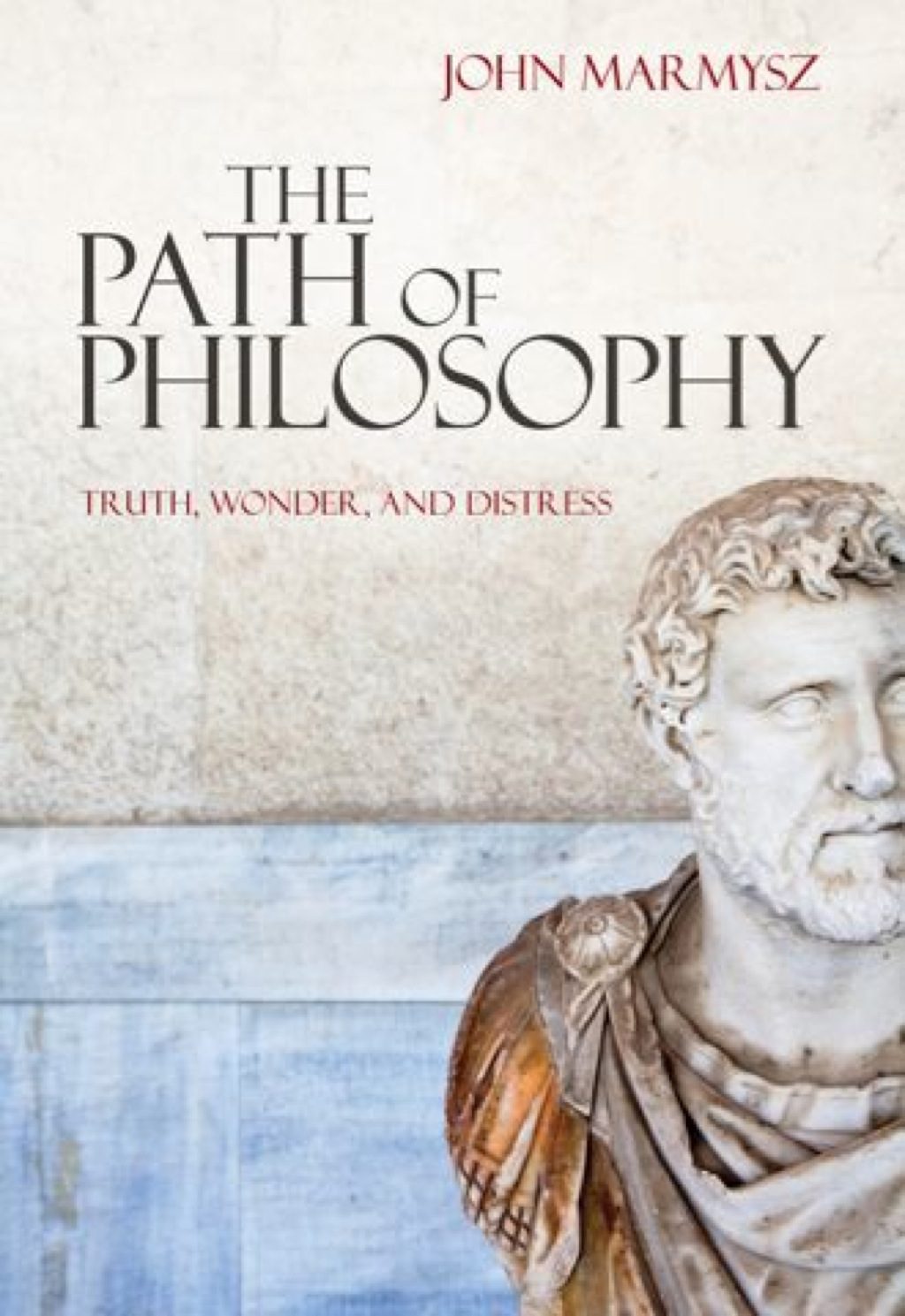Mark Zegarelli0-471-79941-6, 978-0-471-79941-2
L ogic For Dummies tracks an introductory logic course at the college level. Concrete, real-world examples help you understand each concept you encounter, while fully worked out proofs and fun logic problems encourage you students to apply what you’ve learned.
Table of contents :
Table of Contents……Page 8
About This Book……Page 18
Conventions Used in This Book……Page 19
How This Book Is Organized……Page 20
Part III: Proofs, Syntax, and Semantics in SL……Page 21
Part VI: The Part of Tens……Page 22
Where to Go from Here……Page 23
Overview of Logic……Page 24
Getting a Logical Perspective……Page 26
Understanding cause and effect……Page 27
Existence itself……Page 29
Generating premises……Page 30
Forming a conclusion……Page 31
Making Logical Conclusions Simple with the Laws of Thought……Page 32
The law of non-contradiction……Page 33
Math is good for understanding logic……Page 34
Logic is good for understanding math……Page 35
Logical Developments from Aristotle to the Computer……Page 36
Aristotle invents syllogistic logic……Page 37
Euclid’s axioms and theorems……Page 40
Logic takes a vacation……Page 41
Leibniz and the Renaissance……Page 42
Working up to formal logic……Page 43
Logic in the 20th Century and Beyond……Page 46
Gödel’s proof……Page 47
The age of computers……Page 48
Searching for the final frontier……Page 49
Defining Logic……Page 50
Examining argument structure……Page 51
Looking for validation……Page 53
Ice cream Sunday……Page 54
Escape from New York……Page 55
What Logic Isn’t……Page 56
Thinking versus logic……Page 57
Reality — what a concept!……Page 58
The sound of soundness……Page 59
Deduction and induction……Page 60
Rhetorical questions……Page 61
Pick a number (math)……Page 63
Switch on or off (computer science)……Page 64
Find the meaning of life (philosophy)……Page 65
Formal Sentential Logic (SL)……Page 66
Observing the Formalities of Sentential Logic……Page 68
Statement variables……Page 69
The Five SL Operators……Page 70
Feeling negative……Page 71
Displaying a show of ands……Page 72
Digging for or……Page 74
Getting iffy……Page 76
Getting even iffier……Page 78
The ins and outs of values……Page 80
There’s no substitute for substitution……Page 81
Lost in Translation……Page 82
The easy way — translating from SL to English……Page 83
The not-so-easy way — translating from English to SL……Page 85
The Value of Evaluation……Page 90
Value Is the Bottom Line……Page 91
Getting started with SL evaluation……Page 92
Stacking up another method……Page 93
Making a Statement……Page 94
Identifying sub-statements……Page 95
Scoping out a statement……Page 96
The main attraction: Finding main operators……Page 97
Eight Forms of SL Statements……Page 99
Evaluation Revisited……Page 100
Turning the Tables: Evaluating Statements with Truth Tables……Page 102
Putting It All on the Table: The Joy of Brute Force……Page 103
Setting up a truth table……Page 104
Filling in a truth table……Page 106
Reading a truth table……Page 109
Taking on tautologies and contradictions……Page 110
Judging semantic equivalence……Page 111
Staying consistent……Page 113
Arguing with validity……Page 115
Putting the Pieces Together……Page 117
Connecting tautologies and contradictions……Page 118
Linking semantic equivalence with tautology……Page 119
Linking inconsistency with contradiction……Page 120
Linking validity with contradiction……Page 122
Taking the Easy Way Out: Creating Quick Tables……Page 124
Dumping the Truth Table for a New Friend: The Quick Table……Page 125
Outlining the Quick Table Process……Page 126
Filling in a quick table……Page 127
Reading a quick table……Page 128
Disproving the assumption……Page 129
Tautology……Page 130
Semantic equivalence and inequivalence……Page 131
Validity and invalidity……Page 132
Working Smarter (Not Harder) with Quick Tables……Page 133
Recognizing the six easiest types of statements to work with……Page 134
Working with the four not-so-easy statement types……Page 136
Coping with the six difficult statement types……Page 139
Understanding How Truth Trees Work……Page 142
Decomposing SL statements……Page 143
Showing Consistency or Inconsistency……Page 145
Testing for Validity or Invalidity……Page 148
Tautologies……Page 151
Contradictions……Page 154
Checking for Semantic Equivalence or Inequivalence……Page 157
Proofs, Syntax, and Semantics in SL……Page 162
What Have You Got to Prove?……Page 164
Bridging the Premise-Conclusion Divide……Page 165
Using Eight Implication Rules in SL……Page 166
The……Page 167
The & rules: Conjunction and Simplification……Page 170
The……Page 172
Rules: Hypothetical Syllogism and Constructive Dilemma……Page 175
Equal Opportunities: Putting Equivalence Rules to Work……Page 178
Applying equivalences to part of the whole……Page 179
Double Negation (DN)……Page 180
Contraposition (Contra)……Page 181
Implication (Impl)……Page 182
Exportation (Exp)……Page 183
Commutation (Comm)……Page 184
Association (Assoc)……Page 185
Distribution (Dist)……Page 186
DeMorgan’s Theorem (DeM)……Page 187
Equivalence (Equiv)……Page 189
Big Assumptions with Conditional and Indirect Proofs……Page 192
Conditioning Your Premises with Conditional Proof……Page 193
Understanding conditional proof……Page 194
Tweaking the conclusion……Page 195
Stacking assumptions……Page 197
Thinking Indirectly: Proving Arguments with Indirect Proof……Page 198
Introducing indirect proof……Page 199
Proving short conclusions……Page 200
Combining Conditional and Indirect Proofs……Page 201
Putting It All Together: Strategic Moves to Polish Off Any Proof……Page 204
Look at the problem……Page 205
Jot down the easy stuff……Page 206
Know when to move on……Page 207
The three friendly forms: x……Page 208
The two slightly-less-friendly forms: x……Page 210
The three unfriendly forms: x & y, ~(x……Page 211
Choose carefully between direct and indirect proof……Page 212
Work backwards from the conclusion……Page 213
Go deeper into SL statements……Page 215
Break down long premises……Page 219
Make a shrewd assumption……Page 221
One for All and All for One……Page 222
Making Do with the Five SL Operators……Page 223
The tyranny of power……Page 225
The horns of dilemma……Page 226
The (Sheffer’s) stroke of genius……Page 227
The moral of the story……Page 229
Syntactical Maneuvers and Semantic Considerations……Page 230
Are You WFF Us or Against Us?……Page 231
Understanding WFFs (with a few strings attached)……Page 232
Separating WFFs from non-WFFs……Page 233
Comparing SL to Boolean Algebra……Page 234
Reading the signs……Page 235
Doing the math……Page 237
Exploring syntax and semantics in Boolean algebra……Page 238
Quantifier Logic (QL)……Page 240
Expressing Quantity with Quality: Introducing Quantifier Logic……Page 242
Using individual constants and property constants……Page 243
Incorporating the SL operators……Page 246
Understanding individual variables……Page 247
Understanding the universal quantifier……Page 248
Expressing existence……Page 249
Creating context with the domain of discourse……Page 250
Picking out Statements and Statement Forms……Page 252
Discovering bound variables and free variables……Page 253
Knowing the difference between statements and statement forms……Page 254
Translating the Four Basic Forms of Categorical Statements……Page 256
Discovering Alternative Translations of Basic Forms……Page 261
Translating “some” with……Page 262
Translating “no” with……Page 263
Recognizing “all” statements……Page 264
Recognizing “not all” statements……Page 265
Recognizing “no” statements……Page 266
Proving Arguments with QL……Page 268
Comparing similar SL and QL statements……Page 269
Transferring the eight implication rules from SL into QL……Page 270
Employing the ten SL equivalence rules in QL……Page 272
Introducing QN……Page 273
Using QN in proofs……Page 274
Easy rule #1: Universal Instantiation (UI)……Page 277
Easy rule #2: Existential Generalization (EG)……Page 279
Not-so-easy rule #1: Existential Instantiation (EI)……Page 282
Not-so-easy rule #2: Universal Generalization (UG)……Page 287
Good Relations and Positive Identities……Page 292
Defining and using relations……Page 293
Connecting relational expressions……Page 294
Making use of quantifiers with relations……Page 295
Working with multiple quantifiers……Page 296
Writing proofs with relations……Page 297
Identifying with Identities……Page 300
Understanding identities……Page 301
Writing proofs with identities……Page 302
Using the decomposition rules from SL……Page 304
Adding UI, EI, and QN……Page 306
Using UI more than once……Page 308
Non-Terminating Trees……Page 312
Modern Developments in Logic……Page 316
Computer Logic……Page 318
Turing and his UTM……Page 319
The Modern Age of Computers……Page 321
Hardware and logic gates……Page 322
Software and computer languages……Page 324
Sporting Propositions: Non-Classical Logic……Page 326
Three-valued logic……Page 327
Multi-valued logic……Page 328
Fuzzy logic……Page 330
Getting into a New Modality……Page 332
Taking Logic to a Higher Order……Page 334
Moving Beyond Consistency……Page 335
Introducing quantum logic……Page 337
Playing the shell game……Page 338
Grounding Logic in Set Theory……Page 340
Setting things up……Page 341
Trouble in paradox: Recognizing the problem with set theory……Page 342
Developing a solution in the Principia Mathematica……Page 343
Discovering the Axiomatic System for SL……Page 344
Proving Consistency and Completeness……Page 345
Formalizing logic and mathematics with the Hilbert Program……Page 346
Gödel’s Incompleteness Theorem……Page 347
How he did it……Page 348
Pondering the Meaning of It All……Page 349
The Part of Tens……Page 350
Ten Quotes about Logic……Page 352
Gottfried Leibniz (1646–1716)……Page 354
Georg Cantor (1845–1918)……Page 355
David Hilbert (1862–1943)……Page 356
Alan Turing (1912–1954)……Page 357
Start by Glancing over the Whole Exam……Page 358
If You REALLY Get Stuck, Move On……Page 359
Admit Your Mistakes……Page 360
Stay Until the Bitter End……Page 361
Index……Page 362







Reviews
There are no reviews yet.